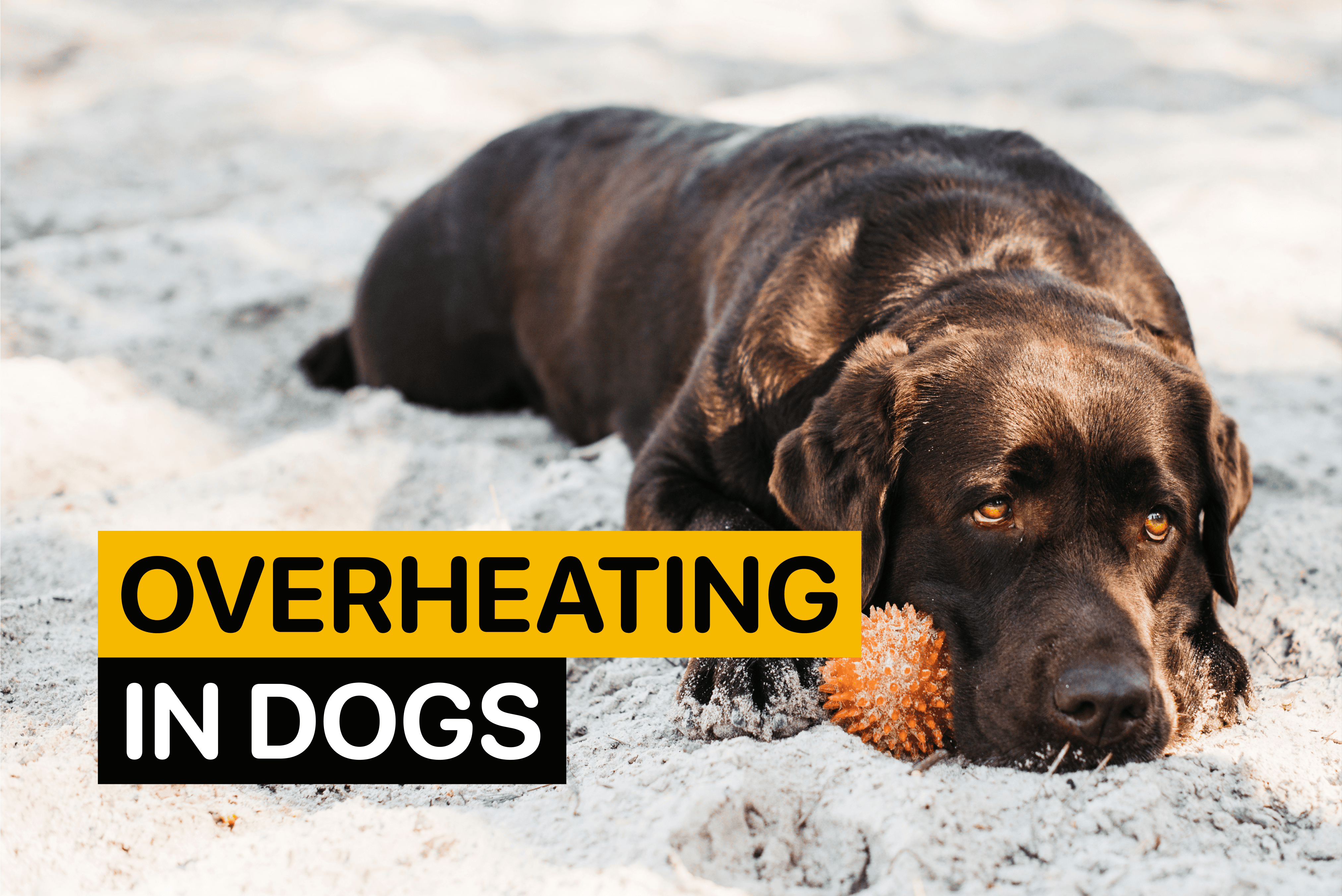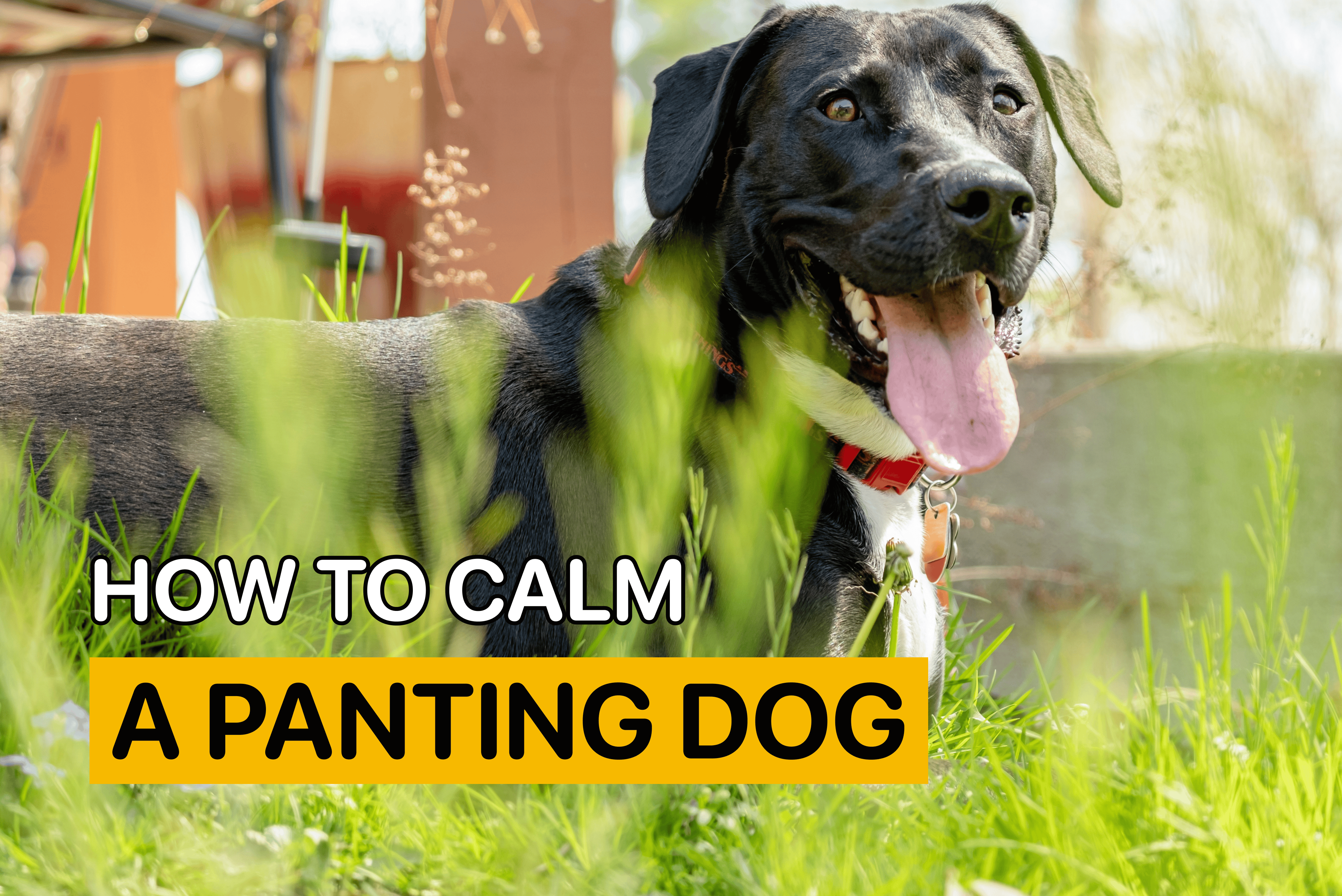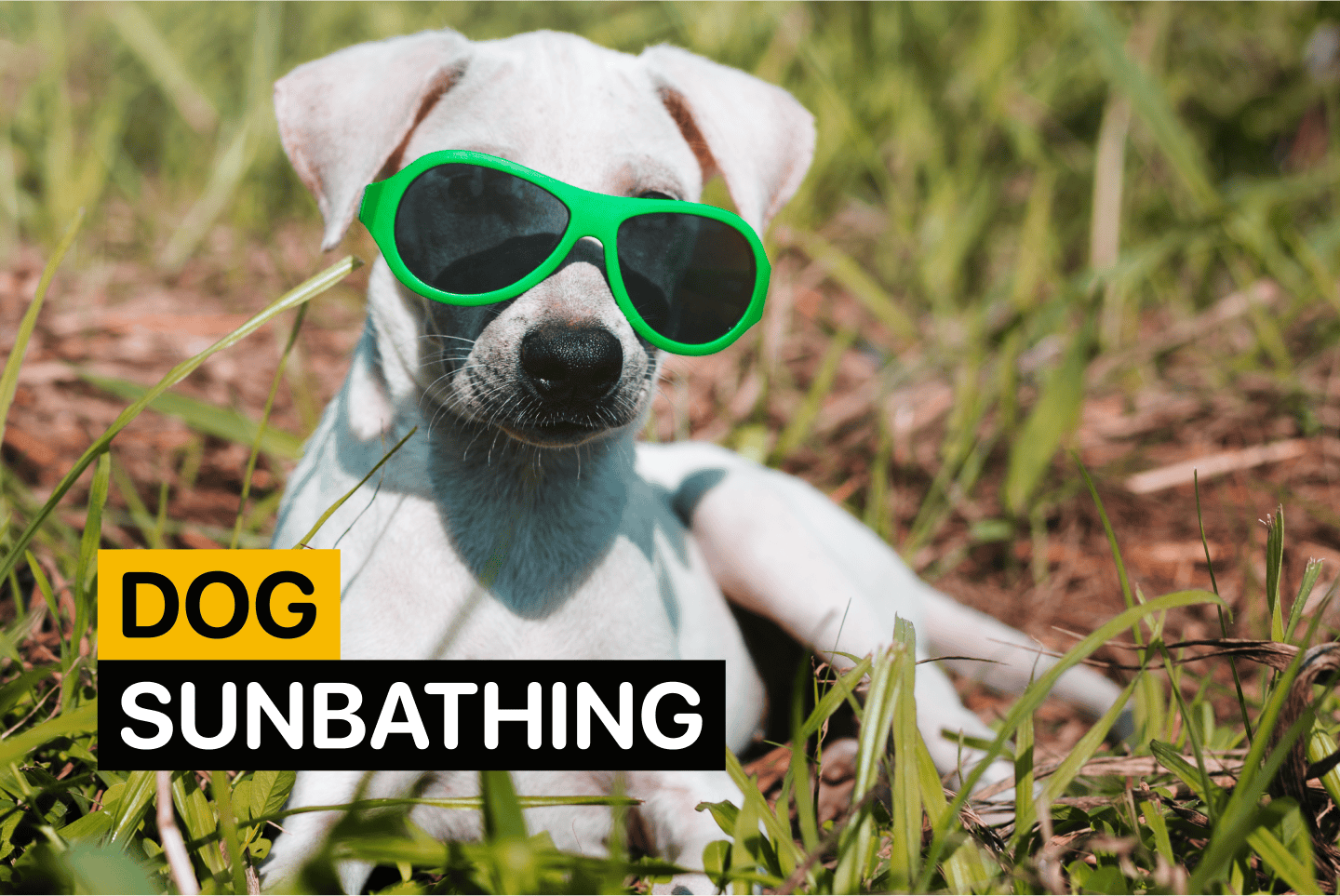How to Tell If a Dog Is Dehydrated and What You Should Do About It

Por
Woofz Team Actualizada en |Revisado por Shannon Kenny
Puntos clave
- Dehydration in dogs is a medical emergency and should be addressed immediately to prevent any health issues
- Dehydrated dogs appear lethargic, with sunken eyes, dry gums, panting, and no appetite
- Dehydration can result from heat exposure or illnesses like vomiting and diarrhea
- Treat dehydration by giving small sips of water, moving to a cool area, and offering wet food
- In severe cases, consult a veterinarian immediately
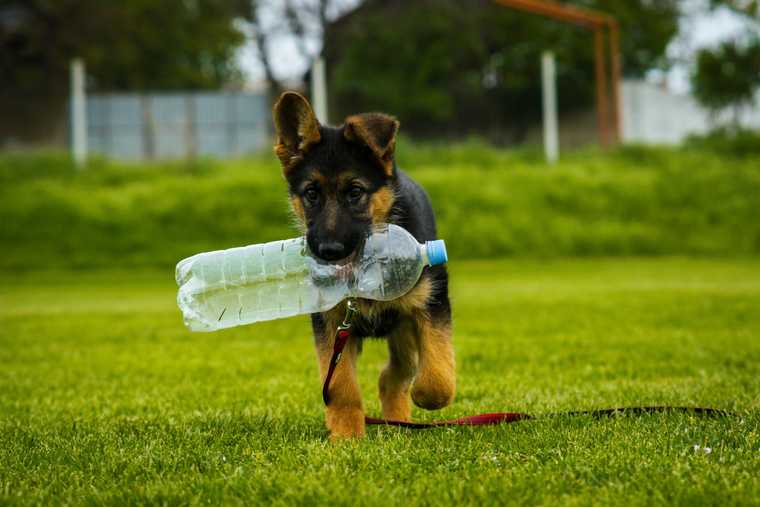
What Is Dehydration in Dogs?
Canine dehydration occurs when a dog loses more body water than they can replace. It is often a result of excessive panting, vomiting, diarrhea, or not drinking enough water. Dehydration can also result from heatstroke, exercising in hot weather, or various diseases, leading to symptoms such as lethargy, dry gums, and sunken eyes.

Dehydration affects different organs and systems in a dog’s body. Dehydrated dogs can’t cool themselves down properly. The condition can cause electrolytes to fail to transport essential nutrients to the cells in a dog’s body. And, finally, it can interfere with proper muscle and nerve functions.
Signs of Dehydration in Dogs
Since dehydration is a medical emergency, dog owners need to learn to recognize its symptoms to address it immediately.
Symptoms of dehydration in dogs include:
- Lethargy and weakness
- Dry, sticky gums
- Sunken eyes
- Loss of skin elasticity
- Excessive panting
- Decreased urination
- Loss of appetite
- Dry nose
- Fast breathing.
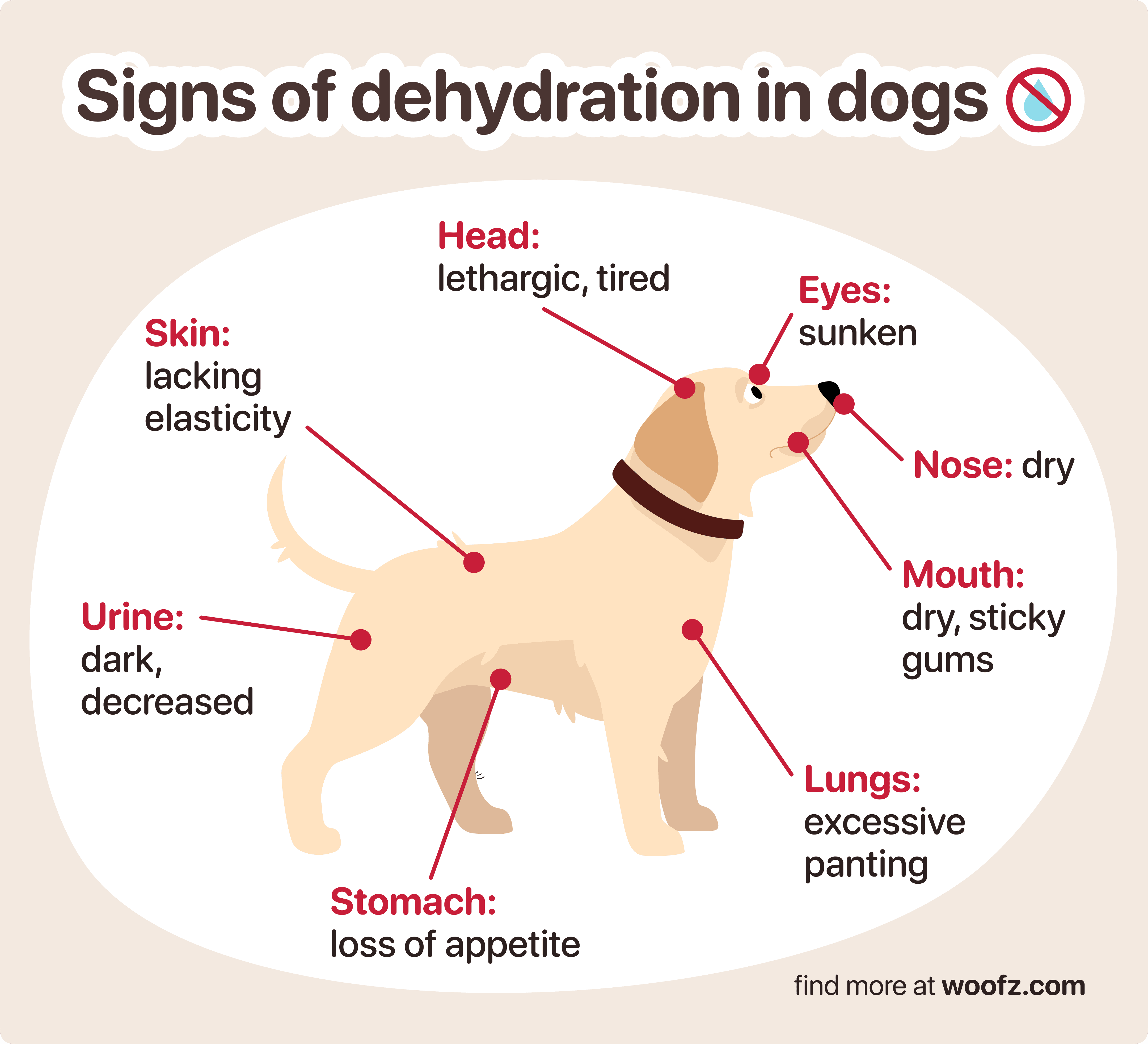
If you’re worried about keeping your pet properly hydrated, consider using the Woofz app to monitor your pooch’s well-being and track all necessary health indicators. Woofz now has a brand new feature: weekly check-ups. You can use the tool to ensure your furry companion’s optimal health status and wellness.
What Causes Dehydration in Dogs?
Now that you know how to tell if your dog is suffering from a lack of water in their system, let’s identify the most common triggers for the condition. This will help you remove your pet from a potentially dangerous situation or consult with a vet promptly to take immediate action.
Excessive heat and exercise
One of the most common scenarios leading to canine dehydration is hot weather, particularly when dogs are still active on a hot summer day.

Heatstroke can occur when a dog's core body temperature exceeds 105.8℉ (41℃). In an attempt to regulate their body temperature, dogs start panting more frequently and will sweat through their paw pads, which can lead to dehydration.
Lack of access to water
An adult canine requires roughly 1 ounce of water per 1 pound of body weight. If they don’t get enough drinking water daily, they can end up dehydrated. So, it’s essential to always keep fresh, clean drinking water in a bowl within your dog’s reach.
Vomiting and diarrhea
Another typical case when your furry friend may start losing water rapidly is persistent vomiting or diarrhea.
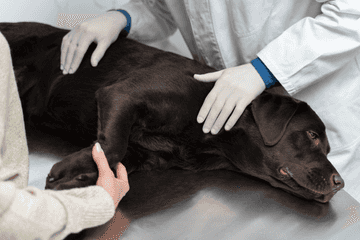
When suffering from these conditions, dogs can’t drink and process water properly. If your dog has digestive issues lasting more than 24 hours, consult a vet for further assistance, as they can get dehydrated quickly.
Kidney disease and diabetes
Some chronic illnesses, such as kidney malfunctions and diabetes, can be contributing factors to dehydration in dogs. Pets suffering from these conditions can benefit from canned food, as it contains extra fluid. Providing them with enough fluids, such as drinking water, every day is essential.
Puppies are more prone to losing body fluids than adult dogs. They lose their water resources faster due to their lower body mass. Additionally, they’re more susceptible to various viruses, which can lead to vomiting and diarrhea.
How to Treat Dehydration in Dogs
Since dehydration is a serious medical condition, it’s vital to act quickly and provide your pet with enough drinking water to restore their body fluids. While in mild cases, a well-hydrated dog can recover at home, more severe situations require veterinary assistance.
Offer water
If you suspect your pooch is suffering from mild dehydration, start offering them fresh water in small quantities. Don’t give them unlimited access to water immediately. Instead, start slowly and provide small amounts in regular intervals throughout the day.

Ice chips
Encourage your dog to drink more by placing ice chips or ice cubes in their water bowl. They’ll also start licking the ice, which promotes slower water intake. You can also consult a vet about pet-friendly electrolyte replacement fluids to mix with the drinking water you offer, if necessary.
Wet food
Offering your pet wet or canned food is another effective way to help them rehydrate. Canned food has approximately 70% moisture content, which is extremely helpful for rehydrating safely.
Rest in a cool place
To help your pet cool down, move them to a cool area. If your dog spends time outdoors, choose a shaded spot with no direct sunlight.

But, preferably, bring your dog inside to a well-ventilated or air-conditioned room. Once their body temperature goes down, they’ll pant less and, consequently, lose less water through evaporation.
See a vet
For more severe dehydration in dogs, it’s necessary to consult a veterinarian immediately. A vet can accurately assess your dog's symptoms and administer intravenous fluids as part of fluid therapy to effectively rehydrate your dog.
Wrap Up
Dog dehydration, especially in severe cases, can be a serious, life-threatening condition. Watch out for symptoms, especially if your dog has been exercising in hot weather or suffers from other medical issues that can contribute to losing body fluids. If your dog has moderate or severe dehydration, contact a vet as soon as possible to prevent possible health complications.
